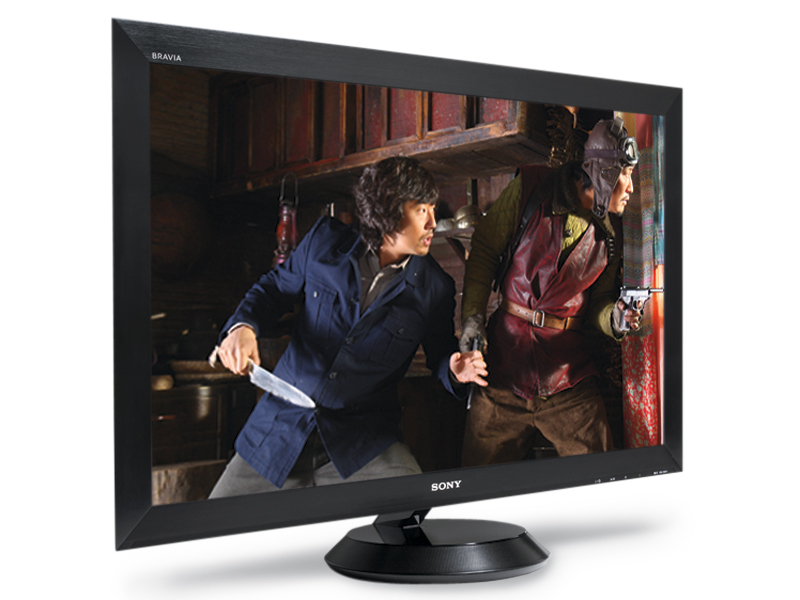TechRadar Verdict
Breathtakingly inventive and gorgeously built, but you can get better performers for the money
Pros
- +
Amazing to look at
- +
Mostly very good pictures
- +
Wireless HD works well
Cons
- -
Motion blur
- -
Edge-based LED inferior to real LED
- -
No 1080p wireless support
- -
Expensive
Why you can trust TechRadar
Recent months have seen a flurry of innovation and creativity in the TV world that surpasses any other period we can remember. But even against that fast-moving backdrop, Sony's KDL-40ZX1 is a bit special.
Remarkably the 40ZX1 delivers not one, but two jaw-dropping world-firsts: an ultra-thin design and wireless HD connectivity.
Ultra-thin design
The first and most instantly obvious of these is the set's depth: a staggering 9.9mm deep at its slimmest part. That's roughly the same thickness as a piece of medium-sliced toast. This, inevitably, gives the 40ZX1 an almost indecent 'shelf appeal'. What's more, the set's slimness doesn't make it flimsy, since the screen is tucked into a pleasing black brushed metal chassis.
Unsurprisingly, the screen's revolutionary thinness doesn't leave room for the usual built-in tuner and connections. These are housed instead inside an external multimedia receiver/tuner box. This approach may not suit everyone, we guess, but to us having all the TV's connections bar a power cord built into an external box is preferable to having loads of cable on show.
The screen does carry a single HDMI monitor input, but most people will stick to connecting everything to the external receiver, the connections of which include three HDMIs, a front-mounted USB input, a component video input, a D-Sub PC port, and a handy pair of IR blaster ports for relaying remote control signals.
The wireless system Sony has employed for delivering AV from the receiver box to the screen is a 5.0GHz RF system capable of carrying 1080i, but not 1080p feeds. The lack of 1080p support is a shame, but at least Sony has been able to build all of the wireless electronics into the screen and receiver; there's no need for the external send/receive units required by the rival beam-based system used on Panasonic's upcoming new Z series TVs.
Sign up for breaking news, reviews, opinion, top tech deals, and more.
LED edge lighting
This is the first TV in the UK to use LED edge lighting, whereby light emitting diodes are arranged around the edges of the screen rather than behind it. Hence the TV's extreme thinness. But the display can't deliver the same local dimming that enables 'true' LED TVs to produce startlingly deep blacks.
Very briefly, other features of the 40ZX1 include MotionFlow 100Hz processing – Sony's proprietary motion enhancement system; multiple noise reduction systems; special photo and video playback modes; dedicated contrast and black level enhancers and gamma and white balance tweaks.
The 40ZX1's XrossMedia bar onscreen menus, with their horizontal and vertical axes, deliver clear text and graphics that's fairly clearly laid out. The remote control is classy, too.
Performance
So does the 40ZX1's revolutionary skinniness compromise its picture quality? Actually, yes. Though not to a disastrous extent.
Comparing its pictures with one of Sony's new X4500 TVs (soon to be reviewed), which uses normal rear-mounted LED lighting, the 40ZX1's dark picture areas look less profoundly black (thanks to the lack of local dimming), and its colours seem a little less intense. We also noticed slivers of light down this Sony model's extreme edges during dark scenes.
However, compared with many non-LED LCD TVs, the 40ZX1's pictures are pretty smart. For instance, while black levels may lack the depth of the best plasma or normal LED screens, they're better than those of most standard LCDs.
Similarly, while colours don't always scream off the screen, they're generally more natural in tone and subtly blended than with typical LCD TVs.
Relatively static HD images look detailed and crisp as well, with acute edging, and this is achieved without the rough, gritty look that some TVs cause when trying to achieve extreme HD sharpness. So pictures can look terrific at times.
However, we have to stress that only 'relatively static' HD images look very sharp, as fast-moving images can look distractingly smeary. And the problem becomes worse when watching SD – even with the MotionFlow circuitry running on 'Normal'. You can reduce the blur considerably if you turn up the MotionFlow to 'High', but this causes more processing side effects than we feel comfortable with.
Standard-definition pictures aren't quite as detailed as we'd like either, with skin tones looking rather waxy and the picture seeming generally slightly soft. And as a final negative, the picture loses contrast quite dramatically if you have to watch it from much of an angle.
But to finish on the sort of positive note the 40ZX1 just about deserves, it's nice to report that the wireless AV system works really well, with no obvious noise being added to the picture or sound.
Sound
If you buy the optional (around £299) desktop stand for the 40ZX1, you also get a novel, almost circular speaker array built into the stand's top edge. And this is a pretty decent performer, serving up a wide, reasonably clear, well-rounded soundstage that even enjoys decent bass, thanks to a dedicated 10W subwoofer component.
However cutting edge and gobsmackingly eye-catching the 40ZX1 might be, its price could buy a bigger and better performer.
The TechRadar hive mind. The Megazord. The Voltron. When our powers combine, we become 'TECHRADAR TEAM'. You'll usually see this author name when the entire team has collaborated on a project or an article, whether that's a run-down ranking of our favorite Marvel films, or a round-up of all the coolest things we've collectively seen at annual tech shows like CES and MWC. We are one.
